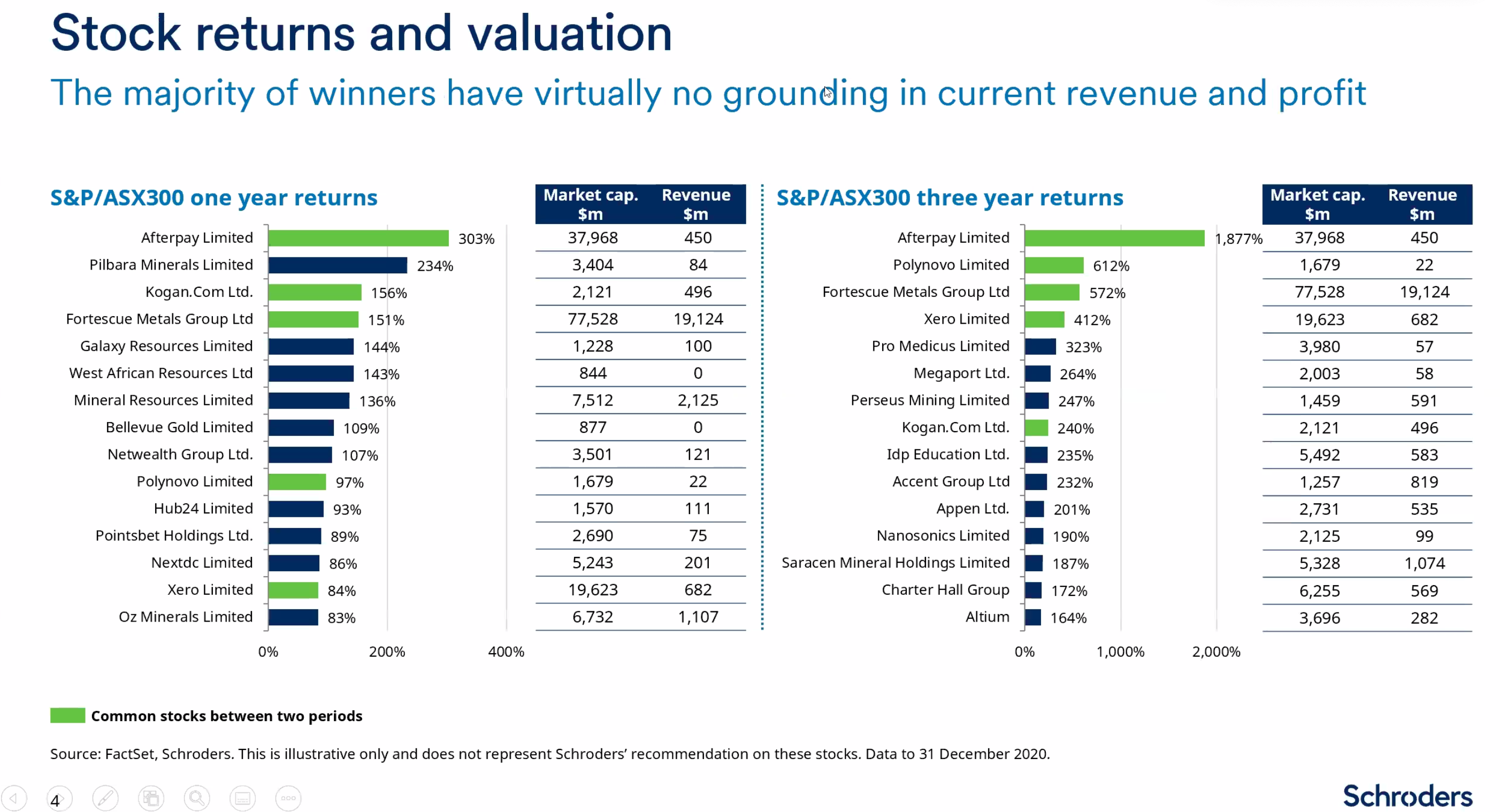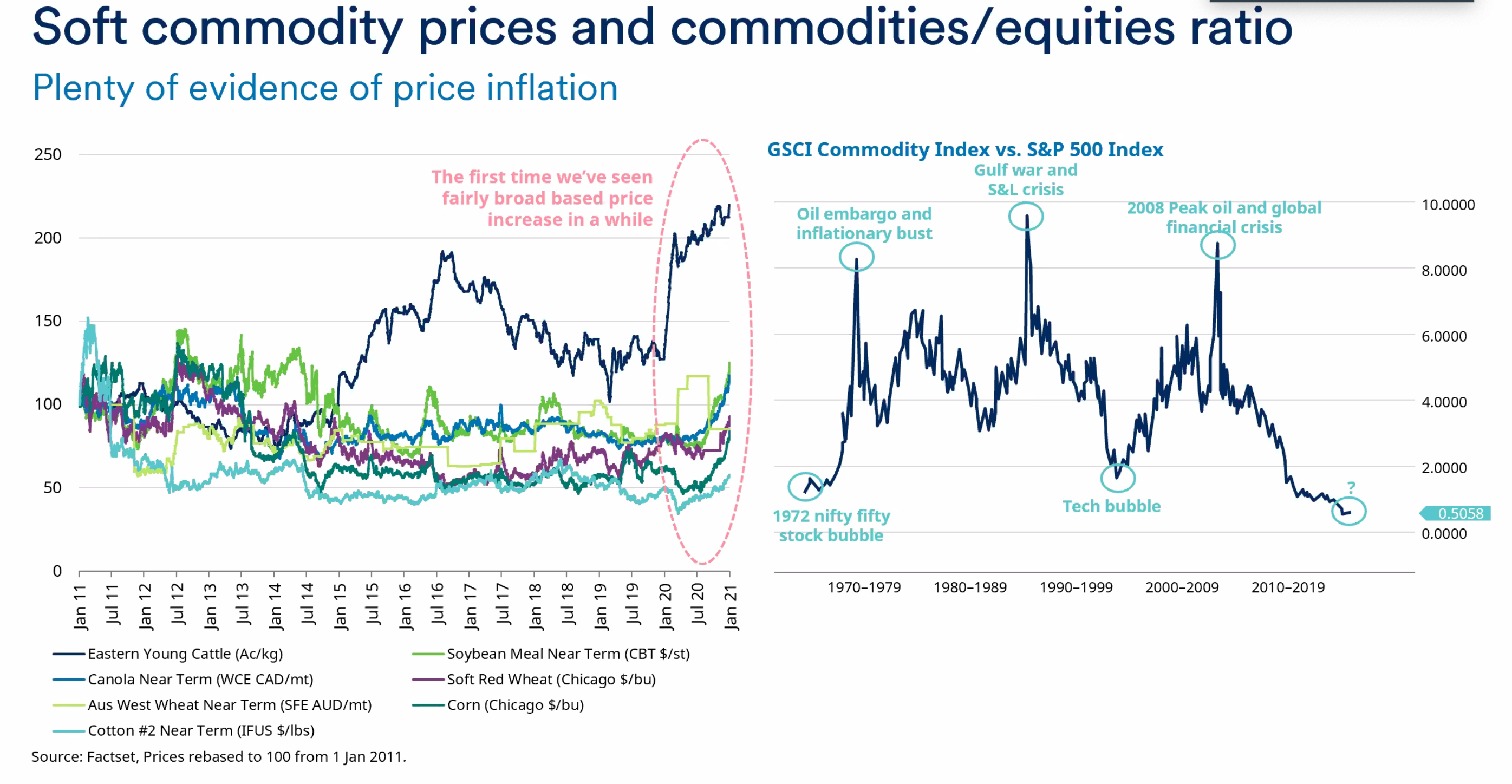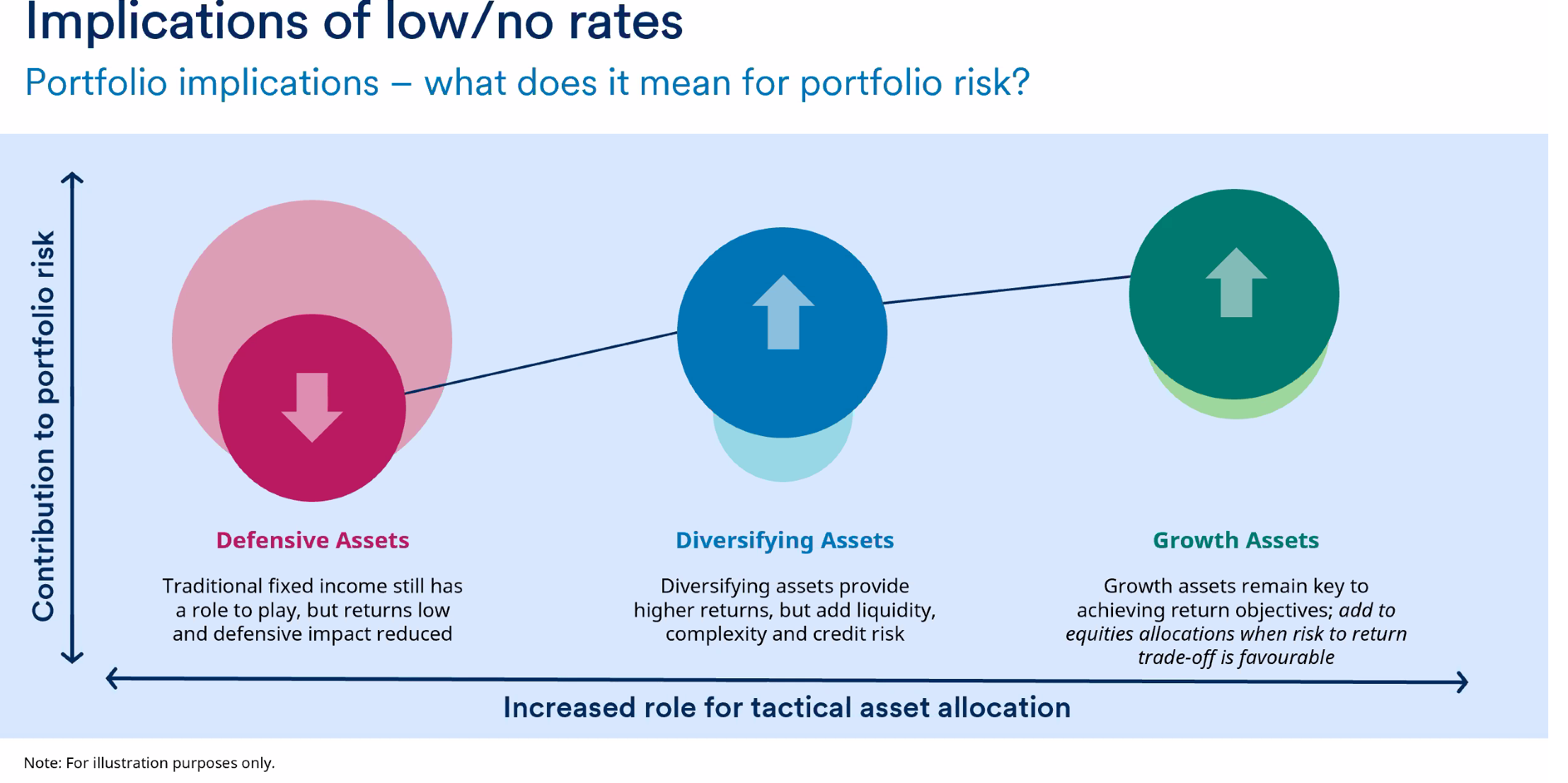The key opportunities in 2021
Persistently low-interest rates and anaemic inflation are forcing investors to ratchet up their risk, but there are a few bright spots to consider in 2021, say Schroders’ heads of Australian equities and multi-asset Martin Conlon and Simon Doyle.
Conlon singles out Afterpay as the local “poster child” for equity market risk, where runaway investor sentiment has projected market value well ahead of actual company earnings. This is reflected in the buy-now-pay-later company’s surging market capitalisation of $38 billion, which now outstrips Telstra’s $37 billion market cap, despite Afterpay generating an annual revenue of just $25 billion a year versus Telstra’s $500 billion.
“You’re adding market value way in advance of adding the earnings, and investors need to be aware of this,” Conlon says.

Across the broader local equity market, Conlon says ratios such as price-to-book don’t look too bad, driven predominantly by the large iron ore miners including Fortescue (ASX: FMG), Rio Tinto (ASX: RIO) and BHP (ASX: BHP).
“A lot of that is due to iron ore miners earning a lot of revenue on the back of high iron ore prices,” he says.
“And in the US, the technology sector is the main reason why markets are very frothy and are arguably the most aggressively valued equity markets in the world.”

Greasing the wheels
In the wake of a pandemic-riven 2020, two key areas of consideration for Conlon and his team now are:
- the remarkable buoyancy of retail spending
- where that spending has gone.
“A lot of it we’d put down to the money supply that has generally come from governments borrowing and handing that to consumers to try and keep spending going,” Conlon says.
“That’s been very successful, and tells you that putting money back into the hands of people who aren’t used to having it, who haven’t benefited from the asset price boom in recent years, puts money back into the economy.”
He suggests this is part of a realisation that trickle-down economics, whereby wealth from profitable corporates supposedly “floats all boats”, hasn’t worked, and that governments getting money directly into the hands of consumers is more effective in stimulating economic growth.
“Inequality is a big issue and will remain so for many years into the future. And governments will need to address it, because like it or not, central bank policies are fuelling it,” says Conlon.
“In order to get economies going again, governments are going to have to inject that money back into the hands of people with a propensity to spend.”
Though the sustainability of current levels of stimulus remains in question. And it can also have unwelcome consequences on areas such as housing. This is particularly problematic if low-interest rates continue and stimulus money prompts more money to flow toward property. “It’s then very hard to add housing supply quickly enough,” Conlon says.
Credit investors taking on more risk
In credit markets, Schroders’ head of multi-asset and fixed income Simon Doyle also discussed the “inflation debate”, saying the one thing that has enabled central banks to keep driving growth has been the lack of consumer inflation.

“And while we’ve seen explosive growth in money supply … we’re likely to see inflation stay low,” says Doyle.
“That overhang of capacity will likely keep it constrained, it’s a risk and it would be very problematic for asset prices if we saw inflation start to rise.”
He believes this is creating problems that haven’t yet manifested.
“Across the broad fixed income universe … it’s occurred across the curve,” says Doyle.
“For investors and savers, it’s forcing them out that risk curve, out of treasuries into corporates; and from developed markets into emerging markets, and from listed into private markets.”
Where are the opportunities in 2021?
In an environment of low rates, investors are increasingly turning to private assets to generate returns and diversify their portfolios, explains Conlon. “Many companies are preferring to stay private because of the more onerous regular reporting and governance requirements of these once listing on an exchange.
Over the past 20 years, the number of listed companies has fallen by around 57% in the US, and 46% in the UK. And this is a trend he expects to continue.
Other alternative asset classes that are uncorrelated to stocks are also rising in popularity, including insurance-linked securities – sometimes known as “catastrophe bonds” – which can prove to be good yield and diversification plays.
Asian strategies, particularly China equities, are another area of interest. “The China A-shares market is around 80% retail investors, so is a really interesting alpha play, along with China fixed interest and Asian equities more broadly.”
Never miss an update
Enjoy this wire? Hit the 'like' button to let us know. Stay up to date with my content by hitting the 'follow' button below and you'll be notified every time I post a wire. Not already a Livewire member? Sign up today to get free access to investment ideas and strategies from Australia’s leading investors.
3 topics
4 stocks mentioned
2 contributors mentioned

